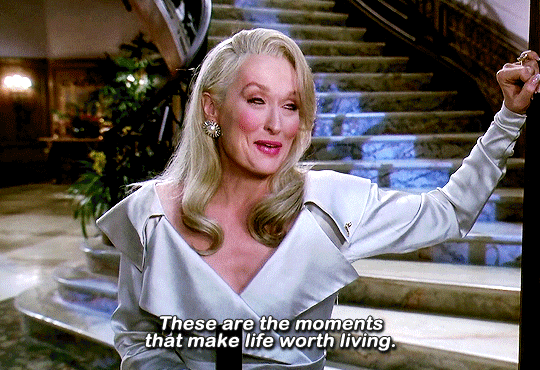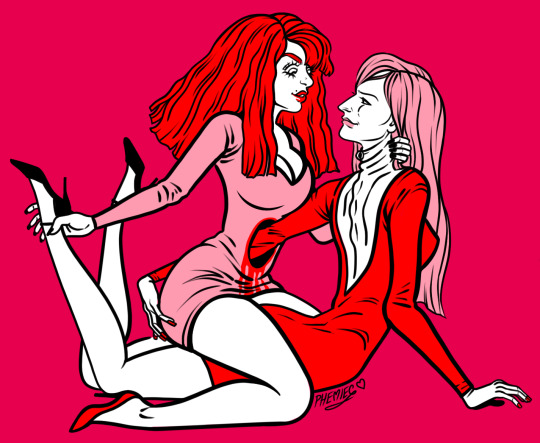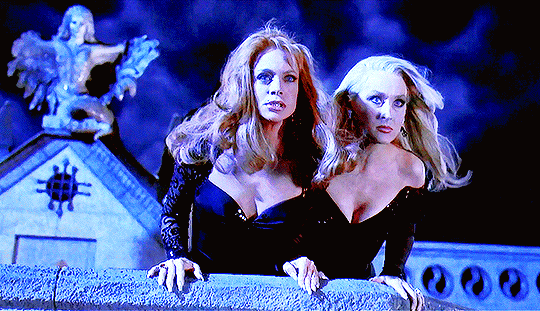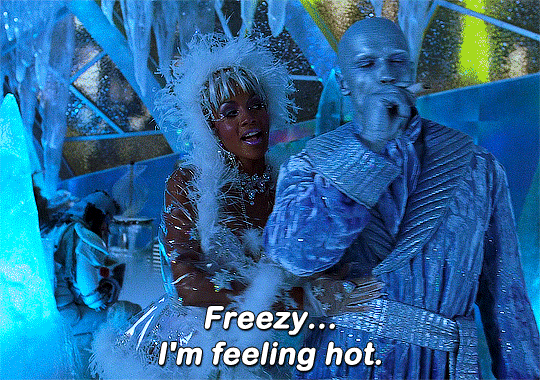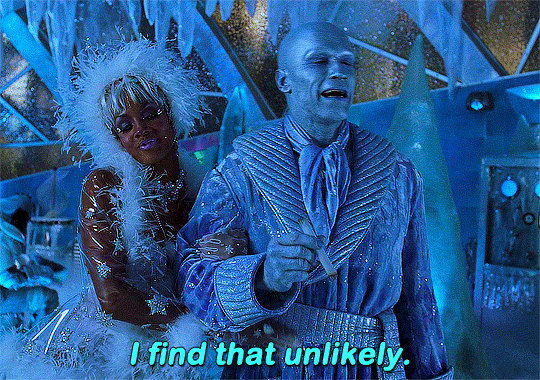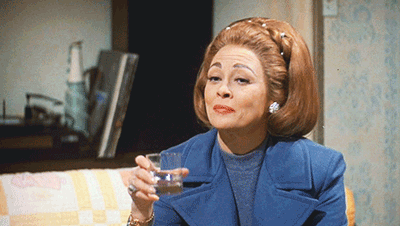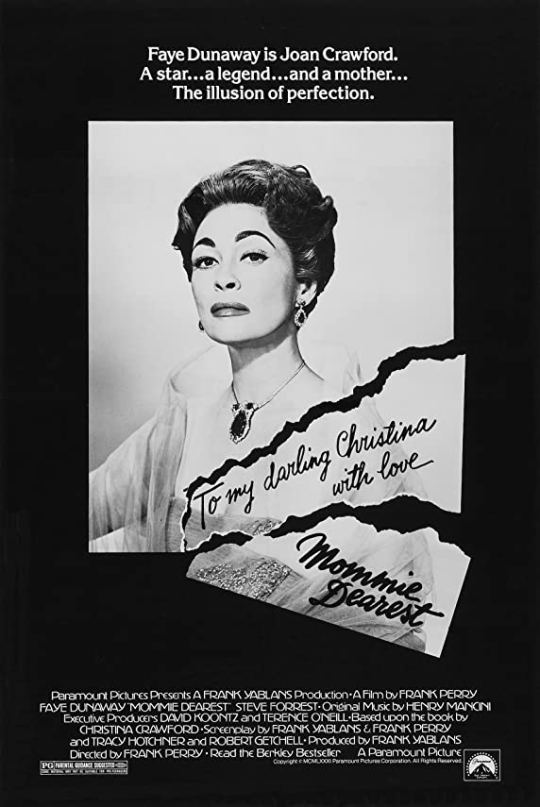Text
Death Becomes Her (1992) dir. Robert Zemeckis
Another film that uses comedic camp to elevate the film for queer audiences. Meryl Streep and Goldie Hawn’s characters hatred for one another becomes so toxic that it leads to them taking drastic measures to kill the other one. Their elaborate and expensive clothing along with the gothic and extravagant manors that the film places its setting in also lend itself nicely to the camp genre. After the two female leads become immortal, they are seen to have stuck together for many decades into the end of the film. This typically leads to audiences to see the two’s relationship as queer, as the two abandon the man they were interested in and live their lives of youth and beauty together.
“How then to defined the camp way of looking at things? Basically, it is a way of praising the form of some thing away from its content, of reveling in the style while dismissing the continent as trivial. What I value about camp is that it is precisely a weapon against the Mystique surrounding art, royalty and Masculinity: it cocks and irresistible snook but, it demystify spy playing up the artifice by means of which such things as these retain their hold on the majority of the population.” (It’s Being so Camp as Keeps is Going, CLASS READING)
As the author says above, camp is about how the audience looks at something and reacts to it. This could involve interpreting a film in one way that was maybe not necessarily intended by those who made it. This is a great example of Death Becomes Her, as the film pits two gorgeous women against each other over an average looking man. While it is very unlikely the director intended queer audiences to identify with the film as a queer film of campiness, this is how audiences have received it.
2 notes
·
View notes
Text
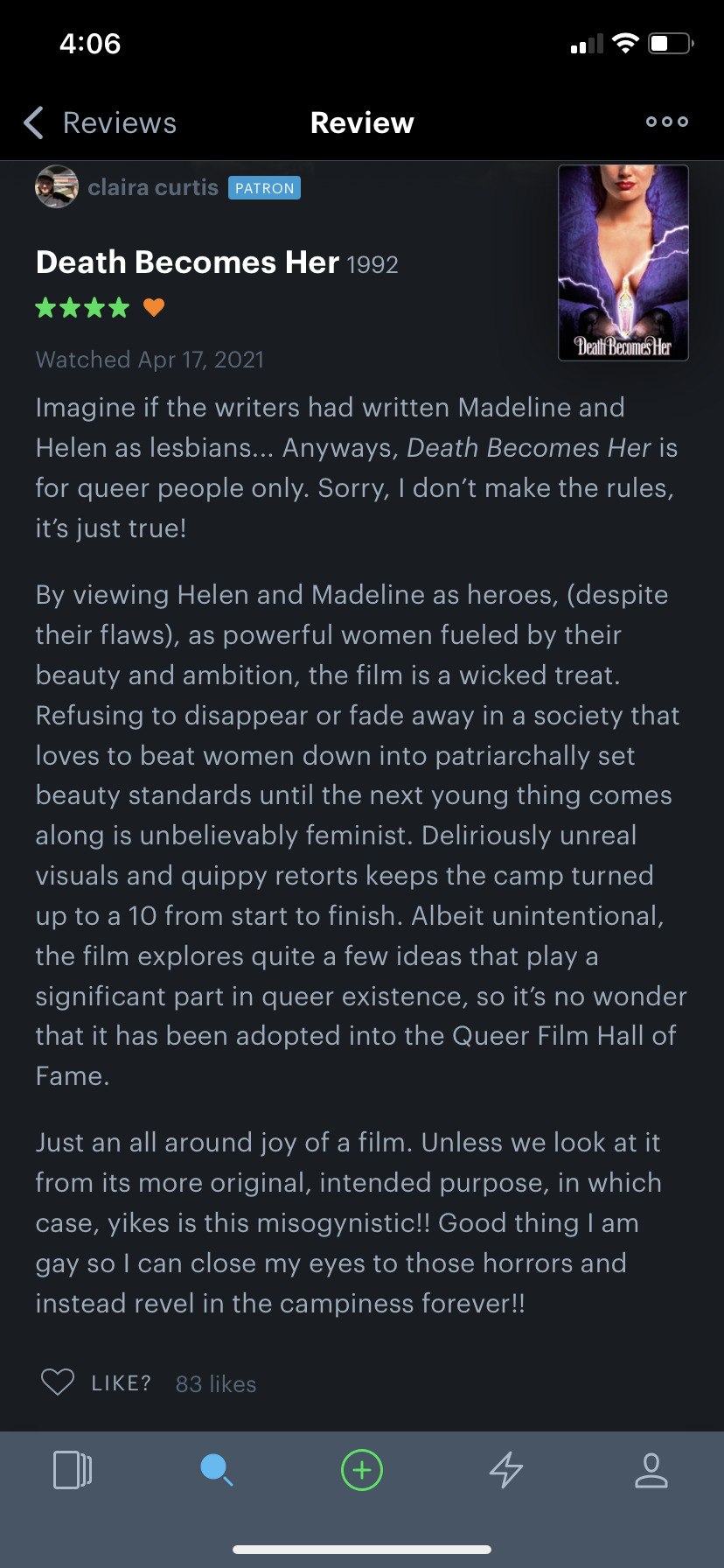
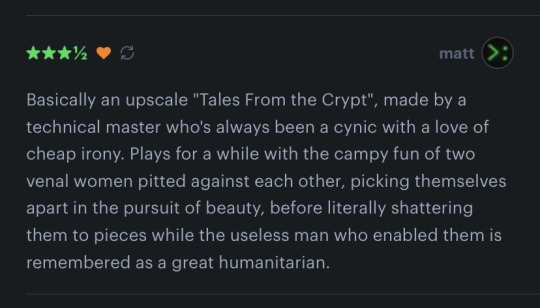
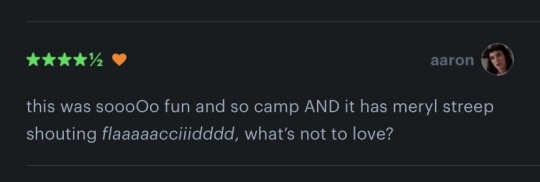

These are some fan reviews of Death Becomes Her from Letterboxd. All of these mention the film’s campiness and some even mention the queer undertones.
0 notes
Photo
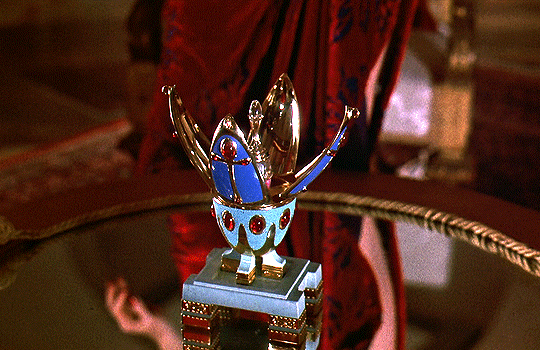

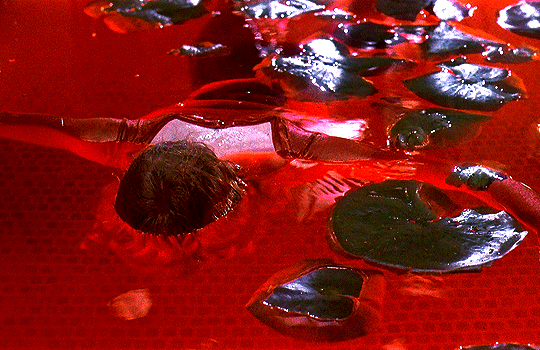
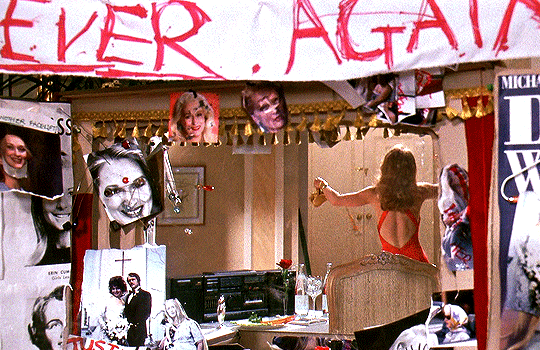
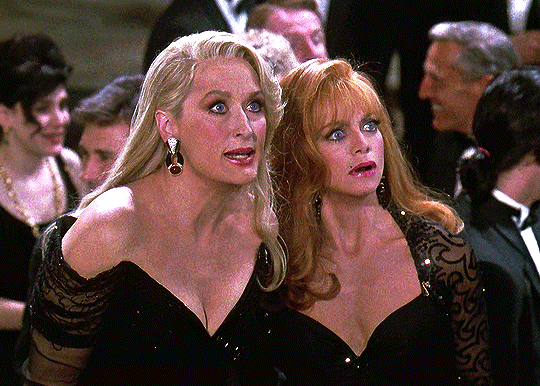
Wrinkled, wrinkled little star.
Hope they never see the scars.
DEATH BECOMES HER
— 1992, dir. Robert Zemeckis
6K notes
·
View notes
Photo
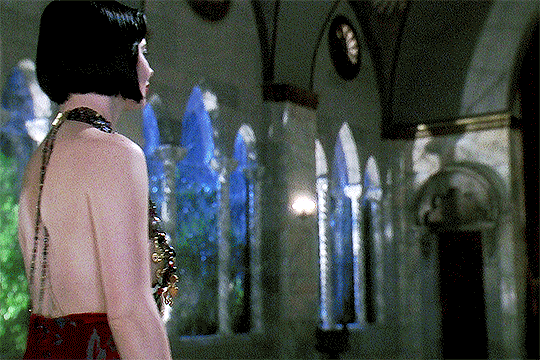
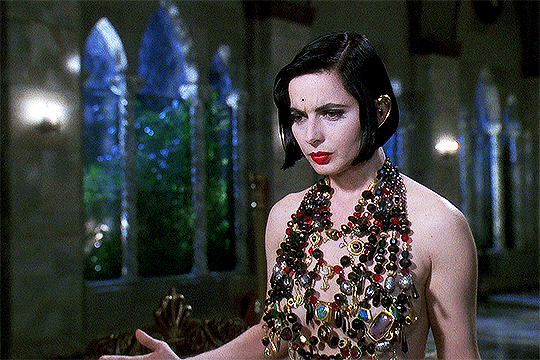
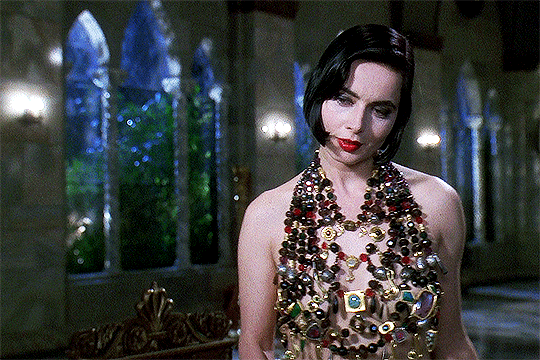
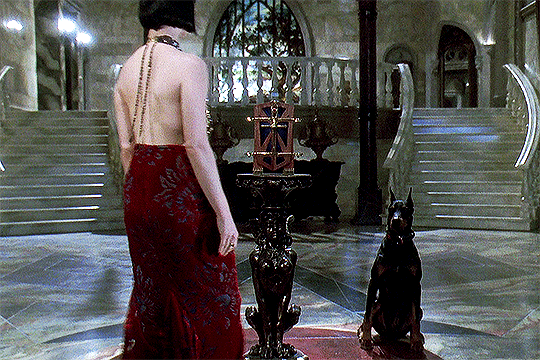
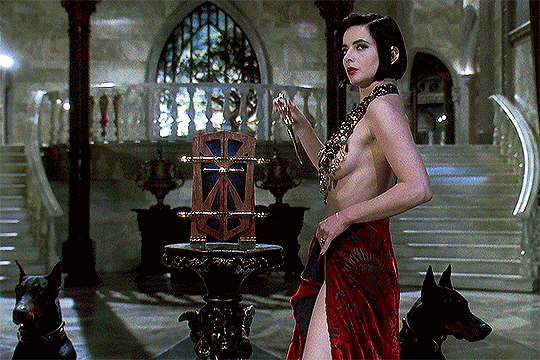
Isabella Rossellini as Lisle Von Rhuman in Death Becomes Her (1992).
33K notes
·
View notes
Text
Batman & Robin (1997) dir. Joel Schumacher
This film, directed by a Gay man, is a much more comedic entry for the camp genre. As a superhero film, it relies on the over saturated colors, the wild costumes, the cheesy dialogue filled with puns, and artsy camerawork to showcase its place in the camp echelon. Schumacher’s direction of the film shifts it to be for the queer male gaze, as the audience is faced with close up shots of Batman and Robin’s crotches, butts, and their over pronounced nipples on their armor.
Queer audiences are also able to appreciate the over exaggerated performances of the villains Posion Ivy and Mr. Freeze played by Uma Thurman and Arnold Schwarzenegger respectively. Two characters who in the comics are portrayed in a more serious light, Mr. Freeze in particular.
“As the spectator identifies with the main male protagonist, he projects as luck onto that of his like, his screen surrogate, so that the power of the male protagonist as he controls events coincides with the active power of the erotic look, both giving a satisfying sense of omnipotence. A male movie star’s glamorous characteristics are thus not those of the erotic object of his gaze but those of the more perfect more complete more powerful ideal ego conceived in the original moment of recognition in front of the mirror.” (Laura Mulvey, referenced in Masculinity as Spectacle - Reflections on Mainstream Cinema // CLASS READING)
Laura’s discussions on how the male audience will relate to and with that of the male movie protagonist relate to this film and Schumacher’s portrayal of Batman and Robin. The audience is queered as they see the two male stars through a queer lens, one that sexualizes them and depicts them much differently than heteronormative superhero films would.
0 notes
Text
There are now so many superhero movies out there that are far worse than this ever was that I feel I can make a legitimate claim for the excellence of Batman and Robin (1997), a film I saw about a bazillion times at the cinema and had on video (and now have on bluray). This film is high camp at its superhero best. Think 1960s Batman on steroids.
It opens with our heroes putting on their suits. Start as you mean to go on boys.

Oh, and their suits have nipples. Excellent me lads!
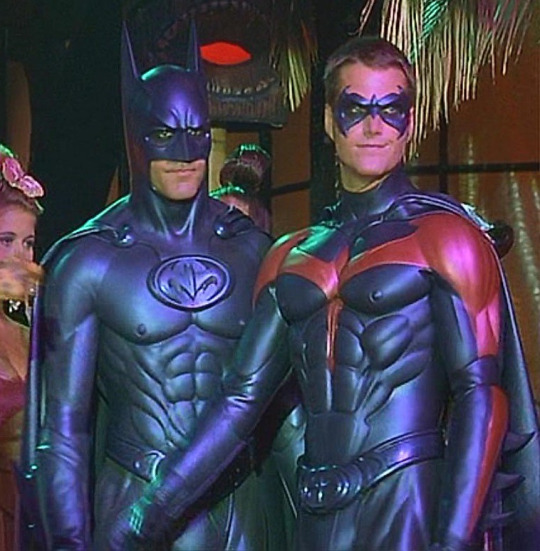
The film introduces Batgirl (Alicia Silverstone)…

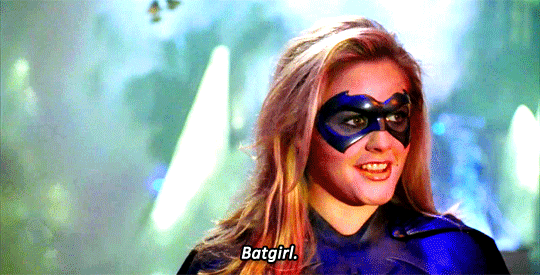
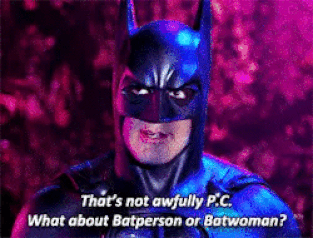
Everything is super neon.
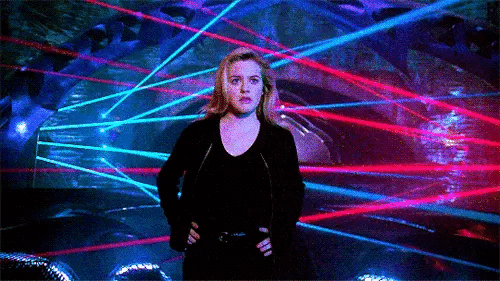
Uma Thurman and Arnie both clearly have a lot of fun hamming it up as Poison Ivy and Mr. Freeze…
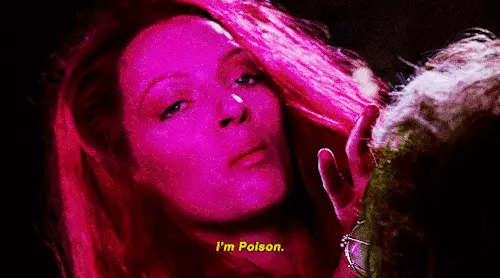
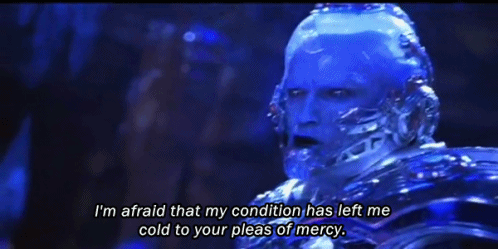


Any oh my word that set design. Gotham City looks like this…
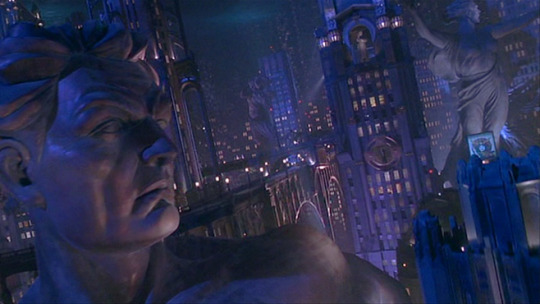
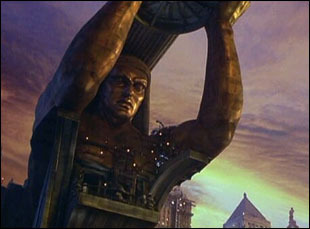
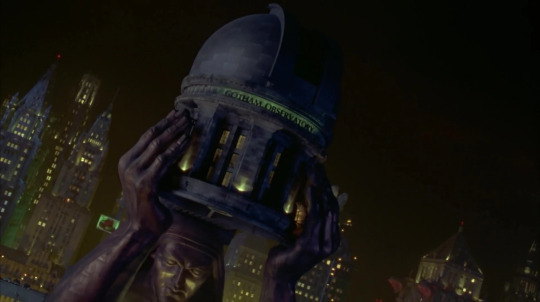
21 notes
·
View notes
Text

Joel Schumacher does Batman better on his second try with Batman & Robin (1997). This film leans heavier into its camp, with less CGI, more women, better villains, and queer subtext.
The action scenes in this film are so much more fun than those of Batman Forever. Ice skating on dinosaurs, day-glo motorcycle races, and lots of plants. The heroes and vehicles move like action figures and Hot Wheels in a child's hands. The Bat Nipples are back and pointier than ever.
I don't know what Uma Thurman is doing as Poison Ivy, but it's working. She and Bane are queer bffs because they share the same abusive ex-boyfriend. Mr. Freeze only speaks in puns, and his makeup goes great with his chrome Power Rangers costume. Batgirl's brand of slut-shaming feminism is laughable, and she's really not an interesting character, but she's there.
The star of the show however, as the title says, is the relationship between Batman and Robin. They're learning how to work and live together. There's a part where Batman says to Robin "Friend. Partner. Brother. Will you trust me now?" They're like Spartan warriors who fight side by side and then sleep side by side.
Does the plot make perfect sense? No. But this campy Batman installment is the queerest of them all, and it is a treat to watch. Highly recommend watching it with a friend to appreciate the good and bad parts of this film.
21 notes
·
View notes
Photo
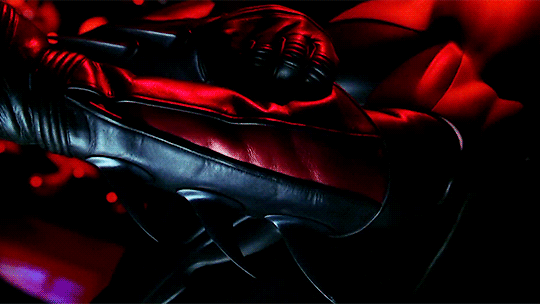

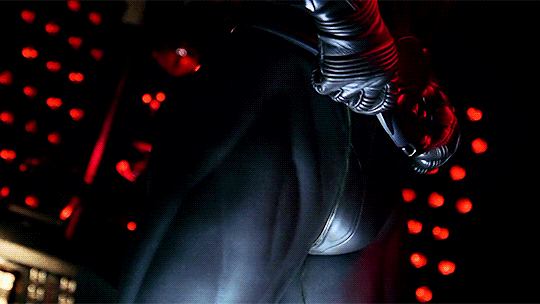


Chris O’Donnell as Dick Grayson/Robin in Batman & Robin (1997)
2K notes
·
View notes
Photo
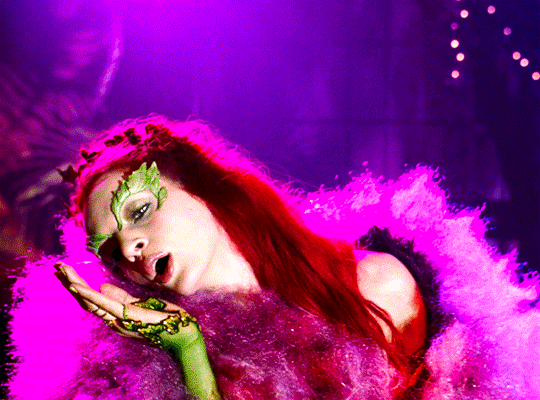
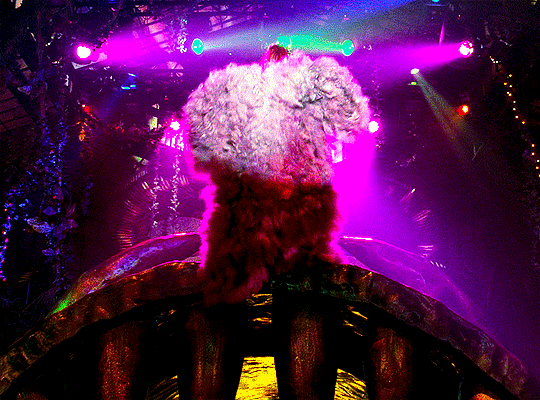

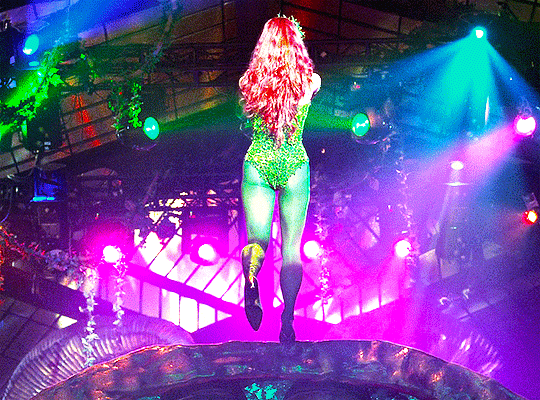
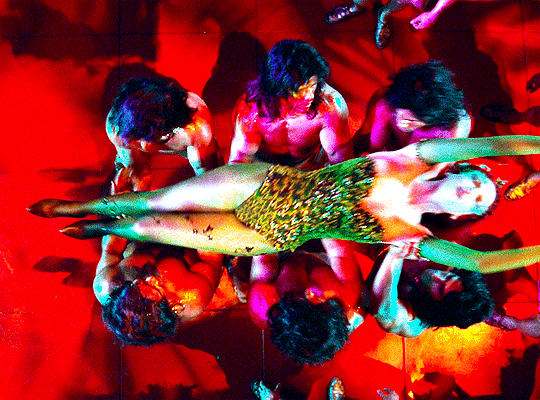


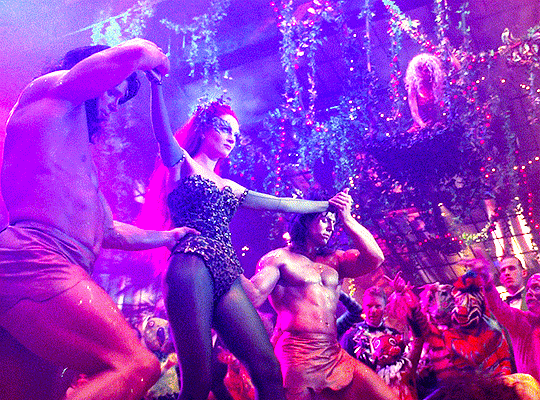


Poison Ivy’s Entrance
BATMAN & ROBIN
1997 | dir. Joel Schumacher
4K notes
·
View notes
Text
Faye Dunaway as Joan Crawford in Mommie Dearest (1981) dir. Frank Perry
In her performance as Joan Crawford, Faye exemplifies camp as she invoked “hagsploitation” in her portrayal. Hagspolitation is also simplified as “hag horror” as it involves older women in horror or dramatic films to exaggerate their performances as they exude a maniacal energy. Faye’s Joan exhibits these outlandish behaviors as she terrorizes her daughter and the others who dare to question her decisions. Joan herself was one of the faces of hagsploitation in her films, ‘Strait-Jacket’ and ‘What Ever Happened to Baby Jane?’
In his essay, “Notes on Camp/Anti-Camp”, Bruce Labruce had a few things to say about camp that are relevant to this film, Faye’s portrayal, and Joan herself. He also touches on Susan Sontag’s piece on camp that has become something of a manifesto for the genre. CLASS READING EX
“The essence of camp, according to Sontag, is it’s love of the unnatural, of artifice and exaggeration.” (Notes on Camp/Anti-Camp 2012)
Sontag clarifies that camp exists as a “sensibility that converts the serious into the frivolous” (Notes On Camp 1964)
In the movie, Joan’s breakdown over the wire hangers is a perfect example of exaggeration and how something so serious to the character becomes frivolous or ridiculous to the audience.
“The twin peaks of classic camp, Bette Davis and Joan Crawford, both had disastrous relationships with their daughters whose memoirs both turned into camp classics. Nurturing motherhood and well-balanced heteronormativity have never managed to exist contemporaneously with great camp.” (Notes on Camp/Anti-Camp)
Here Labruce is directly referencing Joan Crawford and the exploitation film based on her, ‘Mommie Dearest’. Depicted as an abusive and competitive mother, Joan’s life is aggrandized to the extent that the film is more of an accidental portrayal of camp rather than a purposeful one.
0 notes
Photo
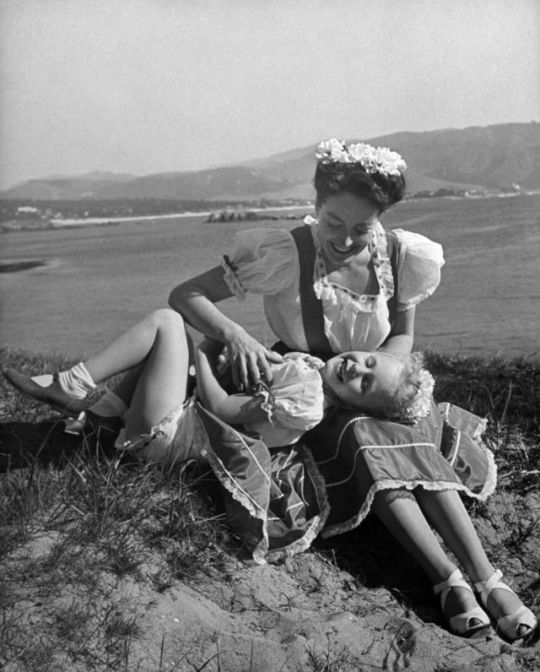


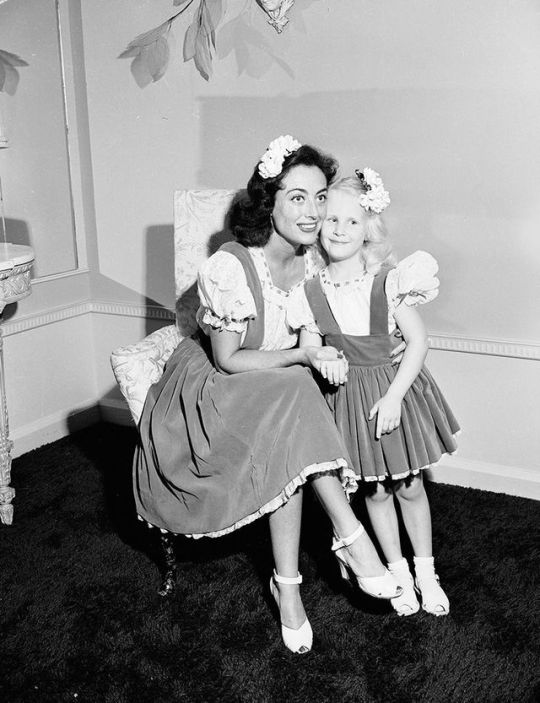


Joan Crawford with her adopted daughter Christina, circa 1945.
557 notes
·
View notes

